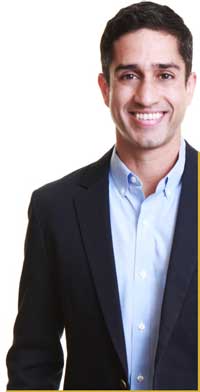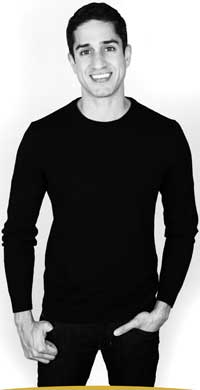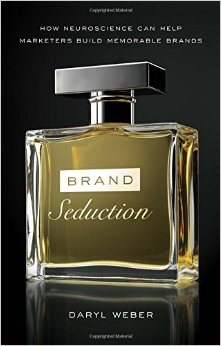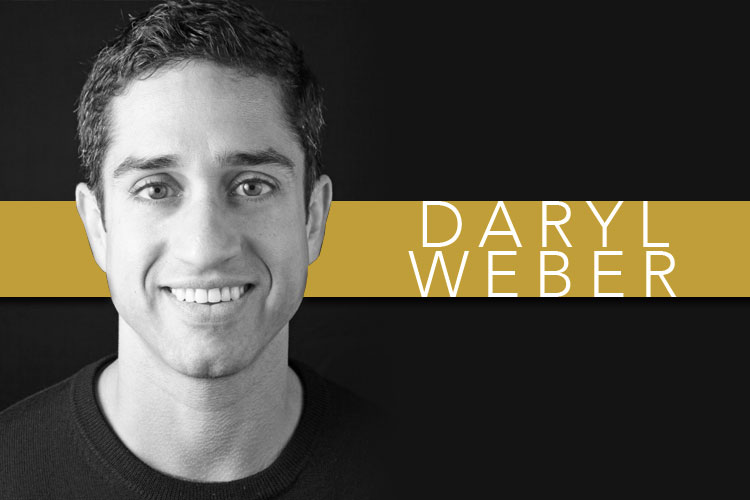 The framework for using science to make marketing decisions.
The framework for using science to make marketing decisions.
When science and marketing meet, something special happens: we start dealing with how things are as opposed to how we think they are. We make assumptions when we are marketing a company, and we very rarely have the opportunity to test them. We are best to base these assumptions in science, so they are closer to being true.
Daryl Weber comes to marketing via the social sciences, psychology to be exact. In his career in prestigious New York ad agency and strategy consultancy, and then a creative leader at Coca-Cola, he rarely ever heard science or psychology come up in decision making. No one’s fault, there was no framework for using science in branding and marketing. So he wrote that framework, and it is now a book. Brand Seduction by Daryl Weber (Amazon affiliate link) explains to us how we can use neuroscience and psychology to market our products and brand together. We have reviewed that book previously on Brand Marketing Blog.
Let’s talk science and marketing with Daryl Weber.
Colin Finkle: What is the definition of the term “brand” to you?
“[A] brand is a collection of associations in consumers’ minds.”
Daryl Weber: I’ve heard many different brand definitions, but the one I use is pretty simple: a brand is a collection of associations in consumers’ minds. These associations can be both conscious and unconscious, and what I argue in the book is that it’s the unconscious associations that are incredibly important, but don’t get enough attention or focus from marketers.
Colin Finkle: You have a very different background than most people in the branding industry. Can you give us a quick summary of where you are coming from?I had always been fascinated by how advertising and marketing worked. I studied psychology as an
Daryl Weber: I had always been fascinated by how advertising and marketing worked. I studied psychology as an undergrad but was drawn to the creativity and excitement of the advertising industry. I started out as an account person at the global ad agency Saatchi & Saatchi in New York, and while I thought I wanted to be a copywriter, I quickly moved into Strategic Planning once I had figured out what that was. After four years at Saatchi, I moved on to the boutique innovation and brand strategy consultancy Redscout. I spent six years there advising Fortune 500 companies on new product innovation, brand positioning, and consumer insights. I then moved down to Atlanta to work at The Coca-Cola Company as Global Director of Creative Strategy, where I worked on brand and communication strategies for many of the company’s billion-dollar global brands.
“I worked on brand and communication strategies for many (…) billion-dollar global brands.”
I always thought I would be able to combine my interest in psychology with my work in branding and marketing, but it wasn’t really possible at these jobs. If you bring up the “unconscious” in a meeting, people start to give you strange looks. So I decided to leave Coke after three years to focus on writing my book on the neuroscience of brands, and to start consulting on my own.
Colin Finkle: Your book “Brand Seduction” is based on scientific research, unlike most marketing books beside it on the shelf. Can you give a synopsis for us?
Daryl Weber: I had noticed that there were a ton of advancements in the sciences of consumer psychology and behaviour, neuroscience, behavioural economics, and more that could greatly benefit marketers that are working to reach consumers. However, it seemed most marketers, especially the creative types, weren’t aware most of this research existed, and if they were, they preferred to use their own intuition and past work experience rather than use science. So my goal with the book is to bridge this gap and explain the science in a way that’s fascinating, creatively inspiring, and easily applicable to how marketers are currently working. The first part of the book goes through what I find to be amazing aspects of the human brain that are relevant to marketers: perception, attention, memory, emotions, and decision making. I then create a model for how to use this knowledge of the brain – what I call the “Brand Fantasy” – and go through a few case studies of brands that do it well. The last section of the book then applies this way of thinking to branding, advertising, market research, and innovation.
I hope to open marketer’s eyes to how the brain really works, which is often not how we think it does.
Colin Finkle: When a neural connection is fired repeatedly, the two neurons forge a stronger connection and fire easier in the future. This is the (theoretical) basis of memory, and in a sense… branding. Am I correct?
Daryl Weber: At the most fundamental level, yes. It is believed that “neurons that fire together wire together” meaning they create a longer lasting relationship, and this is the building block of memory. However, any actual concept or brand in the real world will be represented by enormously vast networks of interconnected neurons, with potentially many millions of neuronal connections and interactions at play. So yes, a brand will be represented by a complex web of interconnected neurons, much like any memory will be (this is called an “engram” in memory psychology).
Colin Finkle: Most discussion and investment around brand focuses on promotion (advertising, web), but, from reading your book, it sounds like the product (design, packaging) and it’s context (channel marketing, product placement) are more important to the brand if you go by the research. Is the industry focused on the wrong things?
“[M]arketers are less aware of how any touch point a consumer has with a brand will greatly influence their perception”
Daryl Weber: Advertising and promotion are still very important, as these are regular touch points that help shape consumers’ set of associations for your brand. But I do think marketers are less aware of how any touch point a consumer has with a brand will greatly influence their perception and associations as well – such as where they see the brand, who they see it with, the design, etc. And even within advertising and promotions, I think marketers focus too much on what the conscious message is, rather than on the “meta-communication” that often last longer in our unconscious memory and may have an even more important role in our final decision making.
Colin Finkle: You say in the book: “brands can add real value, beyond their physical product attributes.” This is something I believe strongly. When using a product from a brand that has a strong connection with its user, that user just naturally has a better experience.
Daryl Weber: That’s right. When you love a brand, there’s something special, almost magical, that the brand gives you that other products can’t. It’s the way an athlete might be inspired to play better if they get that piece of gear from a brand they love. Or the way a musician will be inspired to play better by the “mojo” of a brand of instruments (think Stradivarius violins, Steinway pianos, or Fender guitars and basses). Or the way a shoe feels more powerful with the Nike swoosh on it, or a present feels more special if it comes in a Tiffany’s blue box. Even wine can taste better if the label looks nicer. These are the ways brands can add real value to our lives, by making the product experience better than if we had the same product in an unbranded way.
 Colin Finkle: You outline low involvement processing as the intake of the stimulus around us that does not have our full attention. And you say that most advertising is processed using low involvement processing. This theory would seem to prefer visual advertising as opposed to text ads, and brand marketing as opposed to direct response marketing. Am I correct in these assertions?
Colin Finkle: You outline low involvement processing as the intake of the stimulus around us that does not have our full attention. And you say that most advertising is processed using low involvement processing. This theory would seem to prefer visual advertising as opposed to text ads, and brand marketing as opposed to direct response marketing. Am I correct in these assertions?
Daryl Weber: Great question. Although I haven’t seen many studies on it, my assumption would be that low involvement processing would work similarly across the senses. So if you’re driving and radio commercials come on, you may not be paying too much attention to them, but it’s likely that aspects of those messages are seeping into your unconscious without you realising it. It’s just like the “cocktail party effect” where you hear your name across a noisy room – your brain must’ve been processing all of that audio information even if you weren’t paying attention to it.
In terms of brand building marketing vs. direct response, I think you are correct. I’m talking more about brand building type of marketing, as direct response requires conscious attention and a conscious decision to take an action right then and there. Of course, there are many psychological cues and tricks that direct response marketers use as well to get you to act, but they’re a bit different than this idea of low involvement processing.
Colin Finkle: Every concept in our minds and culture is connected in a web of associations, and we can use these cultural associations to link our brands with certain traits. (Eg. Yellow = discount in North America.) Are there any good resources about these associations for designers so they can choose the correct colours and iconography?
Daryl Weber: I believe graphic designers tend to get what I’m arguing for in the book better than many other kinds of marketers. They know intuitively how a different color shade here, a different font or angle there, can change the whole look, feel, and personality of a brand. And they know how much that matters. There are many books and resources on color psychology and theory, but one great book is Susan Weinschenk’s “100 Things Every Designer Needs to Know About People.” (Amazon affiliate link.) This is an easy and practical read on how design can influence people.
Colin Finkle: Let’s say it is my first day as a brand manager at a Fortune 500 company. How do I start to get in touch with the associations and the brand fantasy around my assigned brand?
“You need to have a deeper introspective session to try to bring out those underlying brand associations.”
Daryl Weber: The first step would be to start to build an understanding how your target consumers view your brand – not just in the traditional market research sense, but at deeper, unconscious levels. In the book, Brand Seduction (Amazon affiliate link), I explain a few projective techniques to help uncover these types of hidden associations that you can do with consumers. The brand likely already has some kind of brand architecture and strategy documents written about it, but typically these are overly focused on the conscious side of the brand. You need to have a deeper introspective session to try to bring out those underlying brand associations. It’ll take a bit of time to get a real sense for it, but it’s worth working on until you really understand your brand from the unconscious side as well.
Colin Finkle: I can see the science and practices in your book being revolutionary for a clothing line, alcohol brand, entertainment franchise, or even a restaurant. But can small business providing a simple service, say a plumbing company, tap into neurocognitive branding?

Daryl Weber: Definitely. Any time someone is selling a product or service, there will be unconscious levers at play. That’s just human nature – it’s how we work. A plumber will certainly have some kind of competition, be it from other plumbers, from the super in a building, or even a handy brother in law. But the plumber wants to instil the idea that only he is the best person for the job and that if something goes wrong, he is the first place they think to go. Small businesses need to build brands just as much as big companies, although they may need to build it in very different ways. Instead of big budget TV advertising, it may be through personal contact, customer service and experience, word of mouth, social media, and more.
Colin Finkle: Any other advice for a fellow marketer or business owner in the midst of fighting the good fight…?
Daryl Weber: Just realise that everything you do is influencing how people see your brand and company. This includes how you and your employees dress, the look, smell, and sounds of your store, the product experience, the customer service, the emails you send…all of it is shaping the web of associations in consumers’ minds about your brand. So make sure all of those things are pointing in the same direction, and telling the same story.
If you found Daryl’s insights interesting, then you may enjoy his book: Brand Seduction (Amazon affiliate link.) Brand Marketing Blog reviewed the book, and we fully recommend it.
Liked this interview? You may also enjoy our interview with New York Times bestselling author: Jay Baer. And find more interviews in the rest of the BMB’s Interview Series. We talk to the industry leading thought-leaders and practitioner of branding.
 Daryl Weber is author of Brand Seduction: How Neuroscience Can Help Marketers Build Memorable Brands which explores the unconscious side of brands in a way that’s inspiring for creative marketers. He’s a branding consultant whose work has influenced many of the best brands in the world, including Coca-Cola, Nike, Johnnie Walker, Gatorade, Old Spice, and many more. You can find him on his website and Twitter.
Daryl Weber is author of Brand Seduction: How Neuroscience Can Help Marketers Build Memorable Brands which explores the unconscious side of brands in a way that’s inspiring for creative marketers. He’s a branding consultant whose work has influenced many of the best brands in the world, including Coca-Cola, Nike, Johnnie Walker, Gatorade, Old Spice, and many more. You can find him on his website and Twitter.
 Colin Finkle is a marketer, designer, and author. He has worked with many Fortune 500 companies to help them best represent their brand at retail, you can see his work on his website. He is the author of the sci-fi book series: The Neverborn Saga. You can find him onTwitter and Linked In.
Colin Finkle is a marketer, designer, and author. He has worked with many Fortune 500 companies to help them best represent their brand at retail, you can see his work on his website. He is the author of the sci-fi book series: The Neverborn Saga. You can find him onTwitter and Linked In.

Leave a Reply